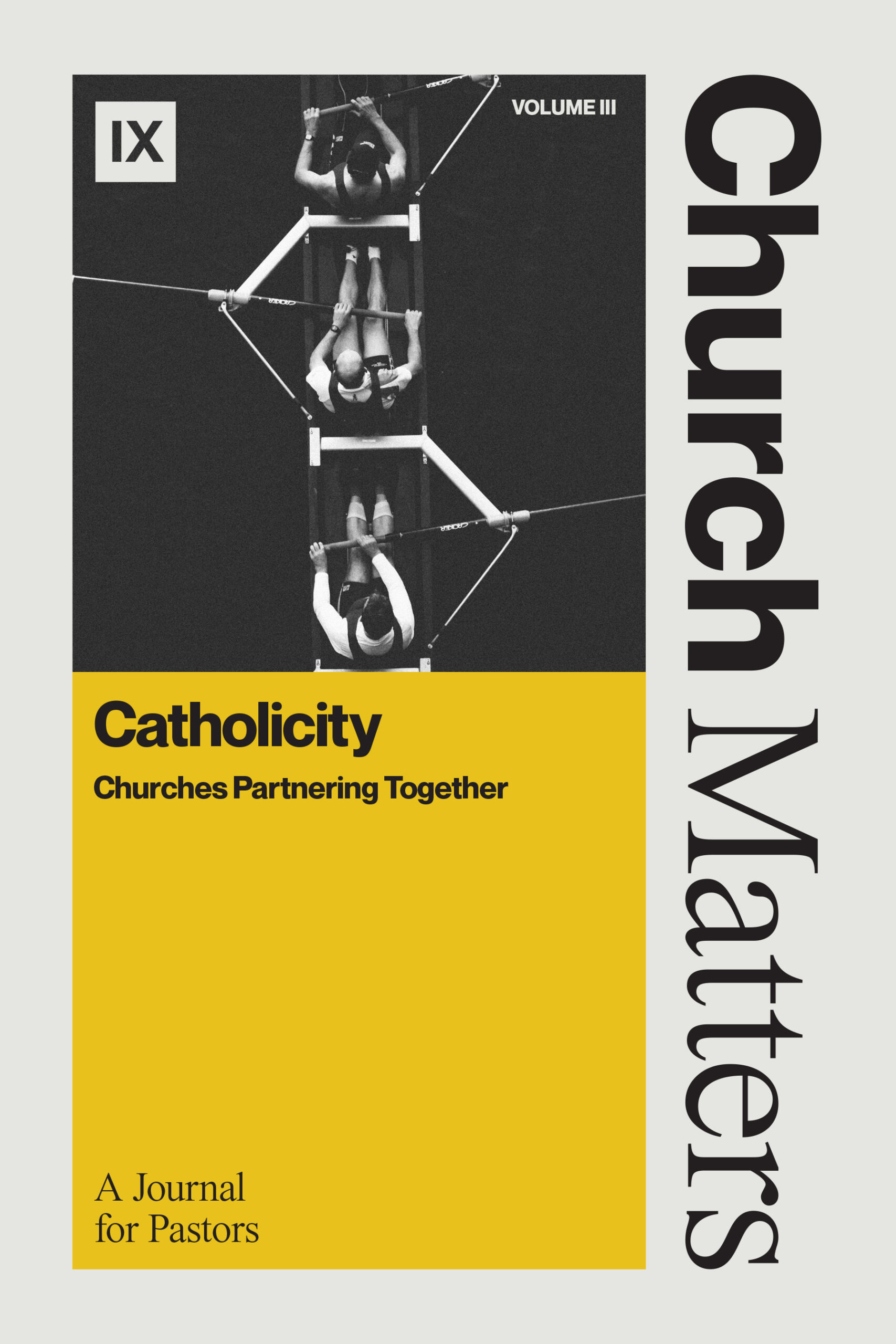Book Review: Association, edited by Ryan King & Andrew King
Pastors should be well-practiced in making the case for church membership to someone. One simply cannot live the Christian life envisioned in the Bible apart from a commitment to a particular body of believers.
But many pastors may be fuzzy on the need for local churches to be in fellowship with other churches. Rightly, we don’t see a universal church equivalent to church discipline in Scripture—no higher court of appeal beyond the local assembly. And besides the apostles (whose authority now resides in their writings), we know there aren’t any other biblical offices above pastors we are called to submit to—no archbishops or popes. These convictions make us baptistic.
Historically, however, Baptists have recognized that the Bible talks a lot about autonomous, local churches cooperating with each other (e.g., 1 Cor. 16:1–3, 2 Cor. 8:18–19, 3 John 5–8). We all have a role to play in the global body of Christ (e.g., Eph. 4:3–6). And in some ways, the “one another” commands apply to inter-church relations, not just intra-church (Gal. 6:2 should be read in the context of Gal. 1:2). We need more help in thinking through why and how local churches can’t do it all alone.
A BOOK TO HELP
A recently published work entitled Association provides a stimulating biblical, theological, and historical rationale for congregations intentionally cooperating together. It also gives practical examples of what this can look like today. If your church is unaffiliated, or if you belong to a network but wonder why you bother, here is a book that will invigorate you to be engaged with something bigger than just you and your local church.
QUIRKS OF THE BOOK
There are a few quirks to this book.
First, it has the expected drawbacks of being an edited work with multiple contributors. Some chapters are more interesting than others. That said, the variety of writers each bringing their own offering fittingly illustrates the concept of cooperation.
Second, readers will notice right away that this book deals largely with the British scene, which means it’s filled with names, places, and customs that will be unfamiliar to non-British readers.
In fact, this publication was produced as part of the 150th anniversary celebration of England’s Association of Grace Baptist Churches (South East), formerly the Metropolitan Association of Strict Baptist Churches, an association of around 60 Reformed Baptist churches in the London area. One whole chapter even chronicles the history of this particular association, including many details irrelevant to those not involved in AGBC(SE).
That said, the British nature of the book brings us back to the birthplace of Baptist associations (like the one that produced the 1st and 2nd London Confessions), which reminds us of a rich heritage to be retrieved. And showing us how these concepts play out in another cultural context gives us fresh insight and ideas for applying the underlying biblical principles to our own setting. It also is an opportunity for non-British readers like me to learn about God’s work elsewhere.
OVERVIEW OF THE BOOK
The beginning chapter presents a case for formal, structured associations of churches that are doctrinally aligned and often geographically proximate. It just makes sense for churches to work together when they can. But more importantly, there is a strong New Testament warrant for doing so. This book will cause you to see the interconnectedness of churches all over the New Testament and read sections like the greetings in Romans 16 with new eyes. There is also a useful theological treatment of the need to express our unity in Christ, relying on the work of John Owen.
Chapter two focuses on three historical anecdotes of associational life. In 1652, the Abingdon Association was formed with the intention of providing help to the weaker churches, protecting purity, and addressing the difficult issues of the day. The Northamptonshire Association started in 1765 and involved such giants as Andrew Fuller and William Carey. This association leaves us an example of a multi-church call to prayer, which was the prelude to the modern missionary movement. The Philadelphia Baptist Association was founded in 1707 and displays the collective weight an association has in standing against societal sins like slavery.
The next two chapters are specific to the Grace Baptist churches of England. One recounts the chronology of the AGBC(SE) over the past 150 years. The other includes exciting stories of current-day church planting and replanting that showcase the potential of cooperative, associational mission efforts. Being part of an association gives you more natural opportunities to be involved in revitalization efforts, which is a great reason for healthy churches to stay in associations with struggling churches.
The chapter written from an international perspective demonstrates the practical benefits of associations in places where gospel churches are few and far between. In Latin America, associations provide indispensable aid in formal theological training, legal protection, financial support, accountability, and indigeneity. Readers will be encouraged to hear about the interest in solid theological resources in Italy, furthered by the work there of the Evangelical Reformed Baptist Churches—an association which began with six churches in 2006 and now is made up of thirteen.
Chapter six gives even more biblical precedents for associations and practical suggestions like pulpit swaps and pastors’ wives’ fellowships. Threats to associations are explored and keys for healthy associations are given, like a shared confession, mutual communication, and genuine care.
The conclusion sums up the case that “more has been done together when an association of churches has shared the same gospel purpose and ecclesiology, than had these churches remained isolated and overly independent” (202). And a vision for AGBC(SE) is presented that will inspire you to see similar ideas implemented among the churches in your context.
NEED FOR THIS BOOK
If you read Jonathan Leeman’s One Assembly and resonated with his explanation of the concept of “catholicity” in the final chapter, this book will show you more of what that looks like in actual practice.
There are few books like it out there. Another recent book, The Baptist Association, edited by Ray Gentry, claims to be the first book on the topic published in Southern Baptist life since 1984. That book focuses more on the proficiencies needed for associational leaders. But Association is unique in the way it presents a deeply biblical vision for autonomous congregations working with each other.









